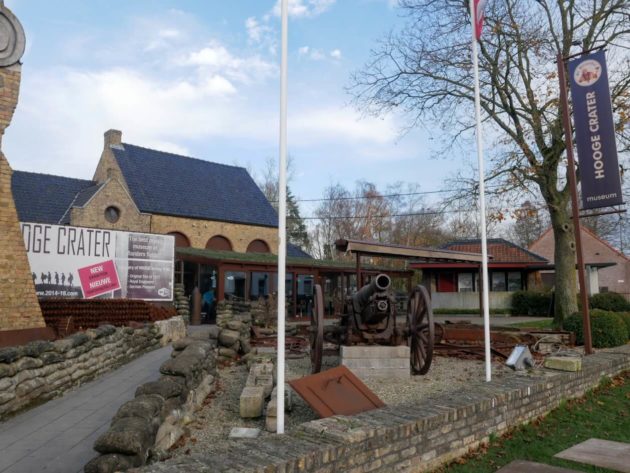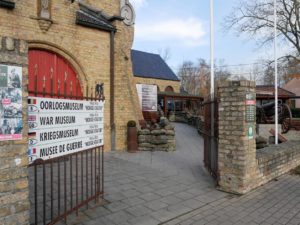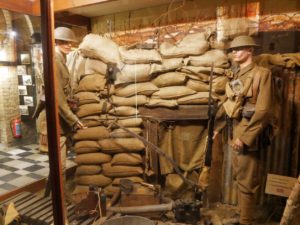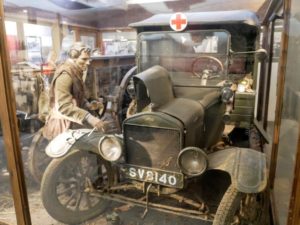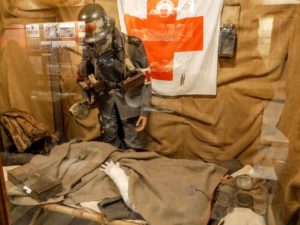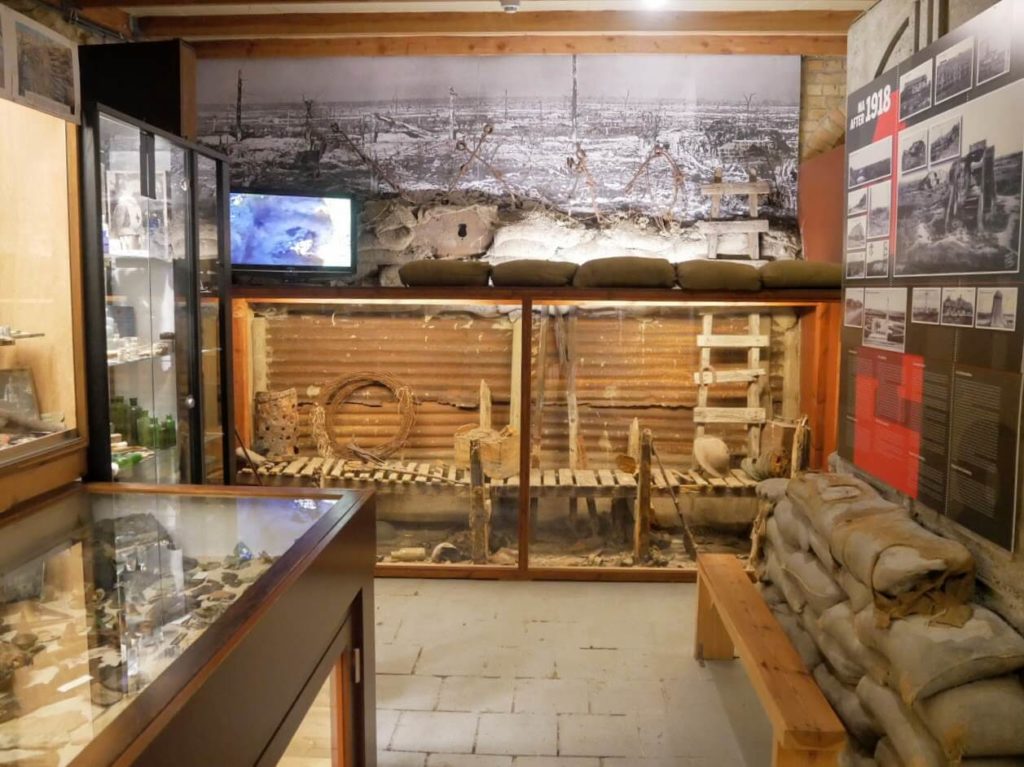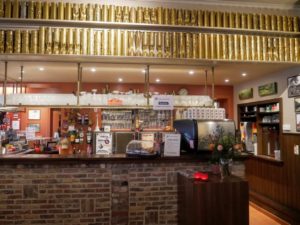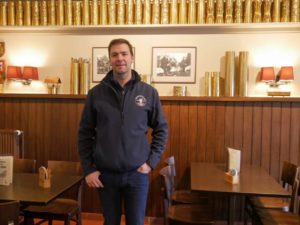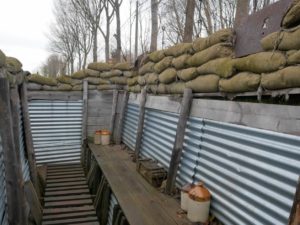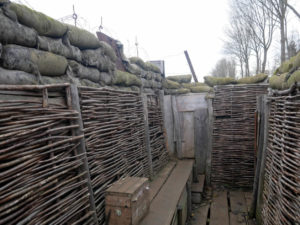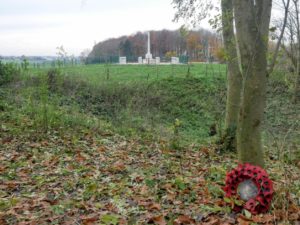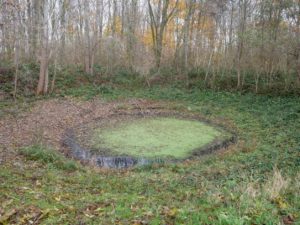Would you like to learn more about the First World War in Flanders? Have you ever been to some of the First World War trenches? Or do you have an idea what the trench art is?
Spending a weekend in Ypres definitely sparked an interest in me to learn more about that dark period of the world’s history. So, I decided to explore it more by visiting the Hooge Crater Museum, one of the most interesting First World War museums in Flanders.
Visiting Hooge Crater Museum
Hooge Crater is a privately owned museum dedicated to the First World War. It’s located some four kilometres (a bit less than two miles) from Ypres, in a small village called Hooge. It’s a great idea for a short trip if you’re visiting Ypres. But, it’s also easily reachable from anywhere in Flanders.
Being proclaimed the best private museums in Flanders Fields, and with its exhibition nominated for the Heritage Prize of the province of West Flanders, it’s a museum you definitely shouldn’t miss while visiting that region of Belgium.
⤷ Read more: Weekend in Ypres
How to get to Hooge Crater Museum
Hooge Crater Museum is located in Flanders, in the western part of Belgium, very close to the town of Ypres. If you are staying in Ypres, you can easily reach it by car. You’ll need around ten minutes to get there. There is a parking space available on the road in front of the museum where you can leave your car free of charge for a few hours.
Flanders is also an excellent area for cycling. So, if you’re going to visit it that way, you can leave your bicycle in front of the museum at the large bicycle parking area. It even has an electric charging point, that’s handy if you’re coming on the electric bike.
⤷ Read more: The best weekend trips to Flanders (Belgium)
What to see at the Hooge Crater Museum
Dedicated to the Great War, Hooge Crater Museum has a vast collection of weapons and uniforms that belonged to all armies involved in the First World War. Together with photographs and documents from that time, it will give you a good overview of all the aspects of life the war impacted.
The Hooge Crater Museum exhibition also includes some lifelike reconstructions of the war scenes. They are great for understanding how the life of soldiers really looked like. From the ambulance vehicle with wounded soldiers to the life in trenches and a reconstruction of the red Fokker DR1 plane with three sets of wings, they all make First World War reality coming to life.
How the Hooge Crater Museum was founded
However, equally impressive as its collection, is the story of how the museum was founded. Located in the old church built shortly after the war, in the 1920s, the museum was opened in 1994. The church was in bad condition when it was bought by the family De Smul – Ceuninck at the beginning of the 1990s’. They thoroughly restored it and opened the museum there a few years later.
The remains of the First World War are still visible in the fields around the village of Hooge, and people working in the fields are often finding bullets, weaponry and other things that used to belong to soldiers. Current museum owner Niek, who bought the museum together with his wife Ilse Benoot – Watteyne in 2009, first got fascinated by the First World War while helping at the farm as a little boy. This is where he found some of the war artefacts and started creating his own small collection. That, a few years later, became a basis for the current exhibition at the Hooge Crater Museum.
That charm and passion Ilse and Niek are giving to this fantastic First World War Museum is something that’s often lost in the large museums. Meeting the owners and listening to their stories and explanations about the First World War is something that definitely sets this place as one of the best museums in Flanders. Well, you can see it for yourself in this short video here.
Theme Cafe at the Hooge Crater Museum
Next to the church in which the museum is, a former village school is located, which today houses the museum cafe. It’s a cosy place perfect for a break after exploring the museum or cycling form Ypres. They serve Flemish specialities and some great local beers. It’s called the Theme Cafe because it’s dedicated to the theme of the First World War, as well.
I was utterly amazed by the ‘trench art’, hammered shell cases on its walls. Waiting in the trenches could have been quite long and tedious, so some of the soldiers would use that time to create art of the shell cases. It was also interesting to see some of the First World War propaganda posters there and travel back in time that way, too.
⤷ TIP: Have a break at the Theme Cafe. Enjoy in some local food and beers. And relax a bit before continuing with exploring the area around the museum. A 12 euros combi-ticket includes entrance fee, lunch and one drink!
Exploring the First World War locations around the Hooge Crater Museum
The area surrounding the museums is where some of the fiercest battles of the First World War in Flanders has been fought. And you can still recognise some of their remains in the landscape surrounding the museum.
There is a map of the area in front of the museum where you can learn more about the locations of trenches, positions of British and German soldiers and other interesting sights in the area. Just across the street from the museum, the Hooge Crater Cemetery is, where soldiers who died in the area, during the First World War in Flanders, were buried.
We took a walk behind the museum where some of the trenches could still be seen. We were able to enter them, and I had such mixed feelings while standing in some of them. It was really claustrophobic, humid and unpleasant being in them. I can’t even imagine how waiting in trenches for months must have felt.
It was interesting to see the difference between the German and British First World War trenches in Flanders. It’s so surprising how close to each other their trenches actually were. They could literally throw a stone to each another.
⤷ Explore more of Flanders: Bruges, Ghent, Mechelen, Leuven
We, then, walked further more into the fields where the First World War battlefield was. Huge craters in the land, caused by bombs exploding during the war, are still visible there. Being in the landscape still shaped by one of the deadliest conflicts in human history, made it just more real to us.
This is a war museum, people come here to discover World War One. But by the time they leave, we hope they will discover the importance of peace. Show them what happened, so it won’t happen again in the future.
I left feeling exactly the same as the museum owner, Niek Benoot, described the message he hopes visitors left with. It’s so important to visit this kind of museums, reminding ourselves of how destructive the wars are. And how innocent people are always the victims in them.
⤷ TIP: Just a few steps behind the museum a lovely Cottage de Vinck is located. It’s a historic guest house, perfect accommodation if you’d like to spend more time in this area. Check out the link here for more info.
Is Hooge Crater Museum child-friendly?
Absolutely! We visited the Hooge Crater Museum with our five-year-old son, and we enjoyed it very much. We did prepare him before, telling him what the war is and reading some children books about the war and sieges. So, when we were there, he was impressed by the trenches, ambulance vehicle and a Fokker plane.
He also got a colouring book and some crayons while we were waiting for lunch at the Theme Cafe. So, he was busy colouring while we talked about all the fascinating history we just learned about during our visit.
Practical information
Museum address: Meenseweg 467, 8902 Zillebeke Ieper-Menen
Opening hours: Tuesday – Sunday, 10 AM – 6 PM
Entrance fee: €5 adults, €2 children & students
More info: Hooge Crater Museum Official Website
Our visit to the Hooge Crater Museum was absolutely one of the highlights of our weekend in Ypres. We loved learning more about the First World War, listening to the real stories of people experiencing it and realising the importance of peace once again.
*We visited Hooge Crater Museum during our weekend in Ypres organised by Visit Flanders. Many thanks to them, Ilse and Niek Benoot – Watteyne for welcoming us, showing us around and making our visit to their charming museum one of our favourite experiences of the whole trip. Of course, as always all opinions are my own.

